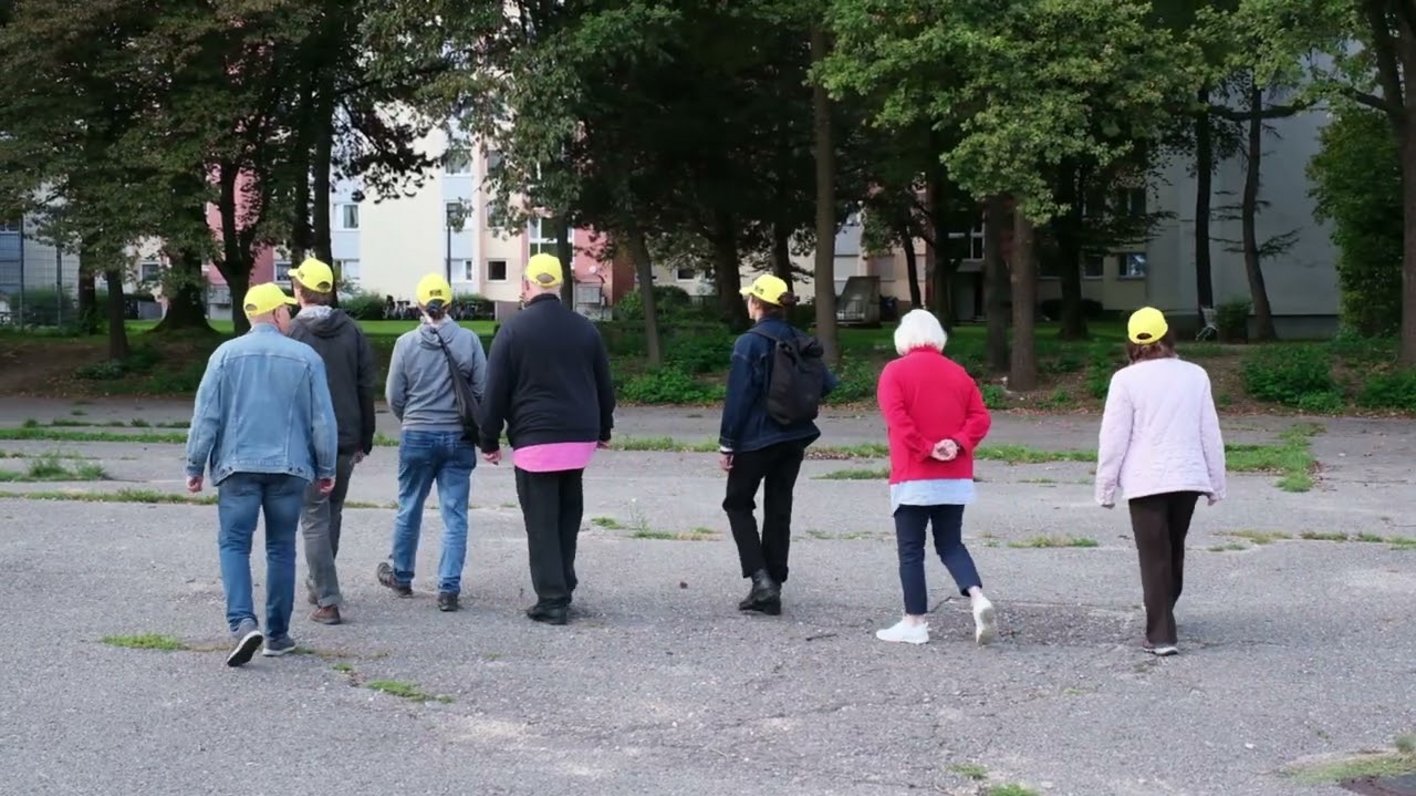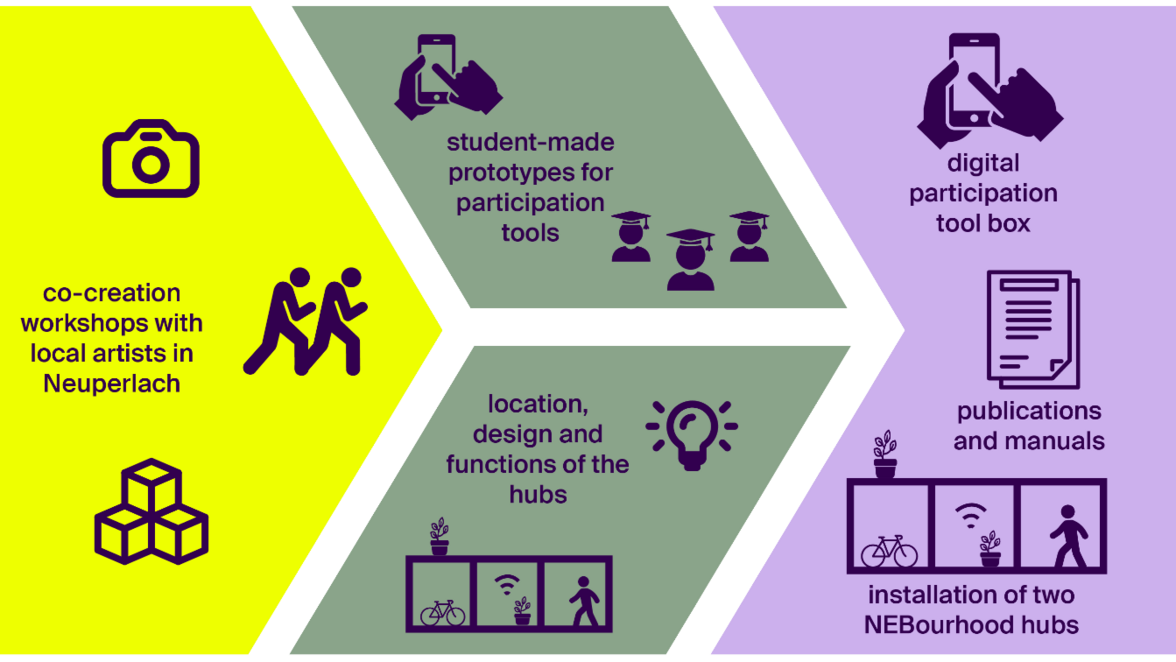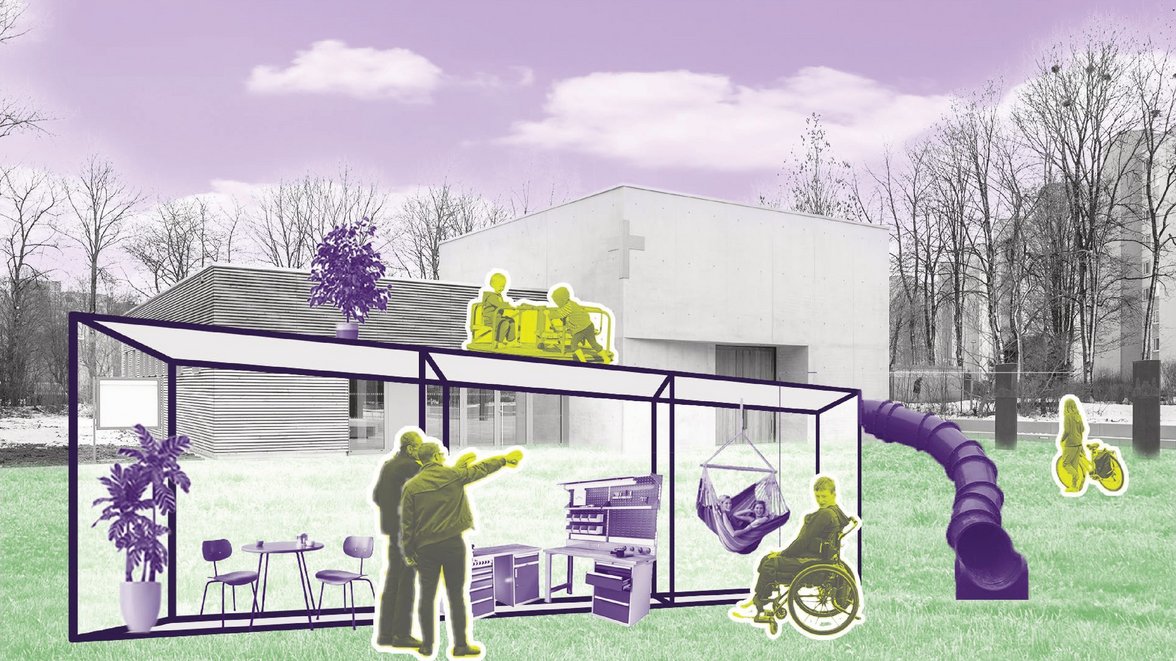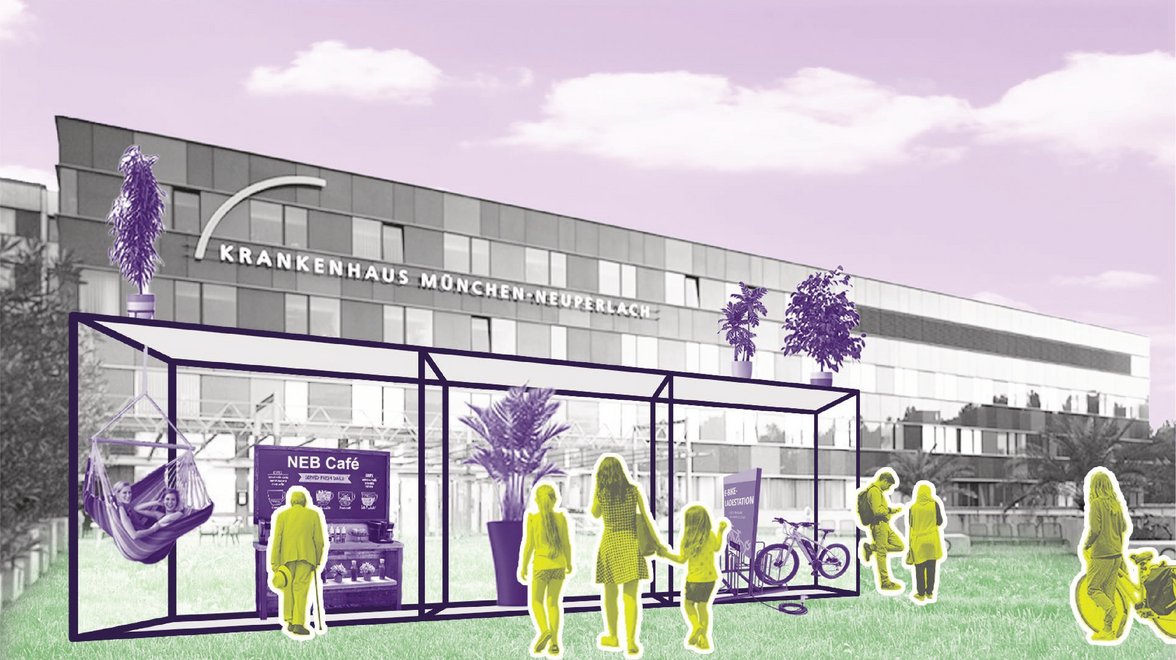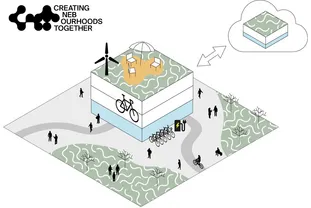
Creating NEBourhoods Together
Creating NEBourhoods Together aims to make living and working in the city sustainable, socially just and environmentally friendly. As one of the European Commission's six European Lighthouse Demonstrators, we are testing new methods and innovative solutions in Munich-Neuperlach for transforming existing urban spaces. A spirit of neighbourhood community and a respectful use of our planet's resources are at the heart of our mission. We are re-establishing connections between people, buildings and public spaces and nature. Circular thinking and collective action are critical components of these sustainable transformations in daily life and in construction.
Creating NEBourhoods Together acts as an international network and creates a model for other cities to follow in spreading the goals and spirit of the New European Bauhaus throughout the world: beautiful, sustainable, inclusive.
Mobility NEBourhoods
Participatory development of NEBourhood hubs as multifunctional mobility centres
A sustainable implementation of innovative forms of mobility is essential for the reduction of environmental pollution and CO2 emissions. At the same time, it presents an opportunity for the design of attractive urban spaces. New transport strategies such as sharing concepts cannot be realized as purely technological solutions, but must be anchored in local communities and actual urban locations.
"Mobility NEBourhoods" combines the data-based analysis of the digital version of the district with a collaboration among local actors and with playful forms of participation. Based on these, we define three suitable locations for multipurpose "NEBourhood Hubs" and develop their functions and design. The realization of the hubs in Neuperlach will provide an opportunity to test, evaluate and discuss forms of mobility.
The research area of the Chair of Architectural Informatics covers the topics of Artificial Intelligence, Collaborative Design, Digital Participation and Digital Urban Infrastructure.
Prototypes are developed in the chair's own BIM laboratory.
The hubs design process includes three phases: the workshop phase, processing phase and completion phase. Initially, together with artists and creatives involved in the NEBourhoods project, we experimented with open, embedded and playful participation formats.
Through these co-creation workshops, we define the location, design and functions of the Hubs and increase our knowledge in participatory processes. Additionally, Data Drifts and Tactical Toolkits Studio students developed participation tool prototypes. (link: www.arc.ed.tum.de/ai/lehre/gallery/data-drifts-and-tactical-toolkits/)
The result of the research will be publications, manuals, a digital participation toolbox and the installation of two hubs.
